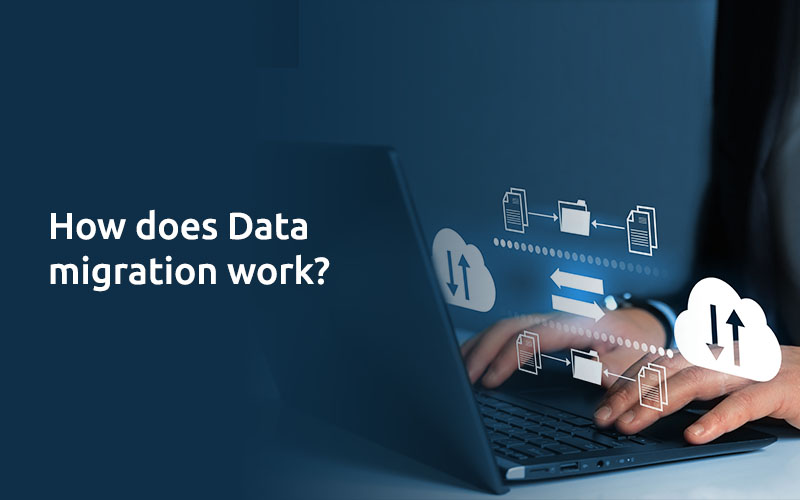How does Data migration work?
Data migration is the process of moving data from one system or storage location to another. This involves transferring data between software applications, databases, or physical storage devices. Data migration is a critical task in many organizations, as it enables businesses to consolidate data, optimize storage, and streamline workflows.
In this blog, we will discuss the fundamentals of data migration, including the steps involved, challenges, and best practices.
The Fundamentals of Data Migration
Data migration is a complex process that requires careful planning and execution. There are several steps involved in data migration, including the following:
Planning: The planning phase is critical to the success of a data migration project. During this phase, the project team must define the scope of the project, identify the data that needs to be migrated, and determine the timeline and budget for the project. The team must also identify any potential risks or challenges and develop a plan to mitigate them.
Data Profiling: The second step in data migration is data profiling. This involves analyzing the source data to determine its structure, quality, and completeness. Data profiling helps identify any data quality issues or inconsistencies that need to be addressed before the data is migrated.
Data Cleansing: The third step in data migration is data cleansing. This involves removing or correcting any data quality issues identified during the data profiling phase. Data cleansing ensures that the data is accurate and consistent, which is critical to the success of the migration.
Mapping: The fourth step in data migration is data mapping. This involves defining how the source data will be transformed into the target data. Data mapping ensures that the data is transferred correctly and that the target system can interpret it properly.
Migration: The fifth step in data migration is the actual migration of the data. This involves transferring the data from the source system to the target system. The migration process can take several hours, days, or even weeks, depending on the amount of data being transferred.
Validation: The sixth step in data migration is data validation. This involves verifying that the data has been migrated correctly and that it is accurate and complete. Data validation is critical to ensuring that the target system is functioning correctly, and that the data can be used for its intended purpose.
Testing: The last step in data migration is testing. This involves testing the target system to ensure that it is functioning correctly and that the migrated data can be used for its intended purpose. Testing also helps identify any issues that need to be addressed before the system goes live.
Challenges of Data Migration
Data migration can be a challenging process for many organizations. Some of the most common challenges include:
Data Quality: Data quality is a critical issue in data migration. Poor data quality can lead to errors, inconsistencies, and even data loss during the migration process.
Downtime: Data migration can cause system downtime, which can disrupt business operations. Organizations must plan for downtime and develop a strategy to minimize its impact.
Compatibility: Compatibility issues can arise when migrating data between different software applications or databases. Organizations must ensure that the target system can interpret the migrated data correctly.
Security: Data migration can pose security risks, particularly if sensitive or confidential data is being transferred. Organizations must ensure that data is encrypted during the migration process and that proper security protocols are in place to protect the data.
Best Practices for Data Migration
To ensure a successful data migration, organizations should follow these best practices:
Develop a Plan: A detailed plan is critical to the success of a data migration project. The plan should include a timeline, budget, and contingency plan for any issues that arise during the migration process.
Test and Validate: Testing and validation are critical to ensuring that the migrated data is accurate and complete. Organizations should develop a testing plan
About DxSherpa Technologies:
DxSherpa Technologies is a high-growth, global IT services company with headquarters in the US and India. As a 100% ServiceNow-exclusive Premier partner, we serve medium to large enterprises across Asia, Europe, and North America. Our expertise spans many industries with special emphasis in Manufacturing, Banking, Insurance, IT, and Healthcare. We have built and developed a dedicated and focused team of 300+ consultants to serve our expanding client base across multiple disciplines on the ServiceNow platform.
We are part of the ACCSCIENT Group of companies. ACCSCIENT is a partnership between FutureTech Holding Company and Alaris Equity Partners. They strive to deliver a multi-faceted portfolio of expertise in Enterprise Platforms, Data Digital Ecosystems, and Talent to enable digital transformation while navigating the need for Global Optimization, Security, and Financial Agility.
Disclaimer: 2023 ServiceNow, Inc. All rights reserved. ServiceNow, the ServiceNow logo, Now, Now Platform, and other ServiceNow marks are trademarks and/or registered trademarks of ServiceNow, Inc. in the United States and/or other countries. Other company names, product names, and logos may be trademarks of the respective companies with which they are associated.
2023 DxSherpa technologies Pvt. Ltd. And DxSherpa technologies Inc. All rights reserved. DxSherpa, the DxSherpa logo trademarks and/or registered trademarks of DxSherpa Technologies. in the United States and/or other countries.
